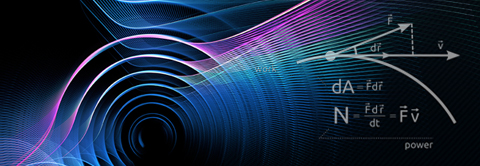(응집물리 세미나) Theoretical Investigation of Exotic Quantum States in Low-dimensional Materials
2022.05.27 13:24
| 날짜 | 2022-06-03 11:00 |
|---|---|
| 연사 | |
| 장소 | E6-2 #1323 |
1. Date / Time
- June 3, 2022
- 11:00 AM (KST)
2. Place / ZOOM
- Room 1323, KAIST Natural Sciences Lecture Hall(E6-2) (자연과학동 1323호)
- Link: https://kaist.zoom.us/j/87307858369?pwd=am5MUmZSaHZFS0pDRkxPTWloSDNYdz09
- PW: 079031
- PW: 079031
3. Speaker
- Prof. Gil Young Cho (Department of Physics, POSTECH)
4. Talk Title
- Theoretical Investigation of Exotic Quantum States in Low-dimensional Materials
5. Abstract
- Because of the enhanced quantum fluctuations, low-dimensional quantum materials provide a natural platform for exotic emerging phenomena. The archetypical examples include Tomonaga-Luttinger liquids, fractional quantum Hall states, and high-Tc superconductivity. More recently, several new members of exotic quantum states have been discovered in novel low-dimensional materials such as twisted van der Waals materials and 2D charge-density wave materials.
In the first part of this talk, we will primarily focus on the so-called conducting network systems, where 1D metallic wires form a periodic 2D superstructure. Such structure naturally appears in several of twisted 2D materials, and also in some charge-density wave materials [2], where domain walls form a regular 2D network superstructure. For these network systems, we first theoretically prove [1] that they realize robust flatbands, which can naturally explain the enhanced superconductivity. We also show that corner states, which are a hallmark of the higher-order topological insulators [4], appear in the network superstructure. Next, we theoretically show that a remarkably wide variety of new non-Fermi liquids emerge and that these non-Fermi liquids can be classified by the characteristics of the junctions in networks [3]. Using this, we calculate the electric conductivity of the non-Fermi liquids as a function of temperature, which show markedly different scaling behaviors than a regular 2D Fermi liquid.
If time allows, we will also discuss the future research and present their perspectives, which include the experimental recipes for the realization and theoretical characterization of steady Floquet states [5] and the classification of quantum phases of matter.
References
[1] J. Lee, C. Geng, J. Park, M. Oshikawa, S. Lee, H. Yeom, and GYC*, Physical Review Letters (2019)
[2] J. Park, GYC, J. Lee, and H. Yeom*, Nature Communications (2019)
[3] J. Lee, M. Oshikawa, and GYC*, Physical Review Letters (2021)
[4] B. Kang, W. Lee, and GYC*, Physical Review Letters (2021)
[5] S. Park, W. Lee, S. Jang, Y. Choi, J. Park, W. Jung, K. Watanabe, T. Taniguchi, GYC*, G. Lee*, Nature (2022)







